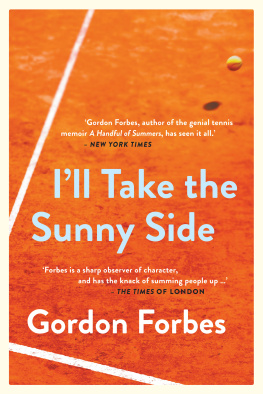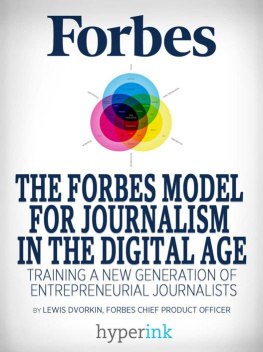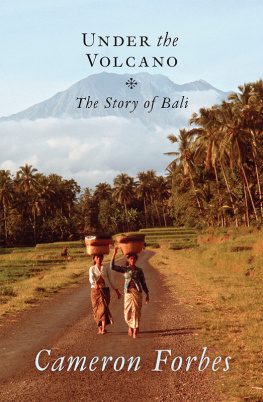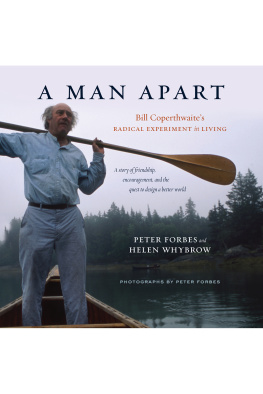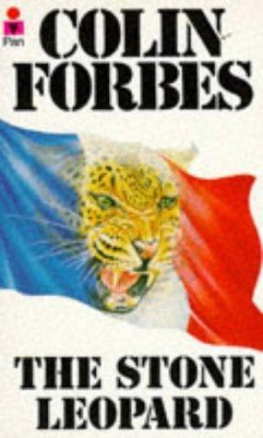


DEDICATED TO JOSEF ALBERS,
BRUNO MUNARI, AND PYTHAGORAS

Copyright 2015 by Rob Forbes
All rights reserved. No part of this book may be reproduced in any form without written permission from the publisher.
Library of Congress Cataloging-in-Publication
Data available.
ISBN: 978-1-4521-1714-0 (pb)
ISBN: 978-1-4521-3037-8 (epub, mobi)
Design by Volume Inc. / www.volumesf.com
Chronicle Books LLC
680 Second Street
San Francisco, CA 94107
www.chroniclebooks.com

ACKNOWLEDGMENTS
There are a lot of people to thank for helping me with this book. At the top of the list would be the personal teachers and friends who helped me appreciate form and visual thinking in our modern world: Michael Cardew, Hardy Hanson, George Nelson, and Ralph Caplan. My appreciation for the design of urban environment should credit many thinkers and writers, with Lewis Mumford, Jane Jacobs, and Jeff Speck being most notable. A flock of people have helped me with the writing of this, dating back fifteen years to Design Within Reach, and they include Owen Edwards, Dan Shapiro, Brenda Natoli, Dung Ngo, Cathy Ho, and Samantha Topol. Other friends who have assisted along the way include Jon Gasca, Giulio Lazzotti, Lawrence Wilkinson, Kelly Sultan, Scott Maddern, Eric Spiekermann, Ted Boerner, Dan Nguyen-Tan, and John Willis. The Chronicle publishing team includes Brooke Johnson, Erin Thacker, Caitlin Kirkpatrick, Leigh Saffold, Bridget Watson Payne, and Mark Burstein. And a special thanks to Leslie Carol Roberts and Stephanie Vernier, who helped me guide this to completion, along with designers Eric Heiman, Bryan Bindloss, and John Provencher at Volume Inc.

NEW YORK


Seeing. One could say that the whole of life lies in seeingif not ultimately, at least essentially.
Teilhard de Chardin
Ten years ago, I came upon a bin of nail polishes in a Seoul shopping mall. Why did I stop to take this photo? Perhaps it was the mad pile of ecstatic colors, maybe it was the angles of the white caps, or it could have been the fact that this random collection of cheap, trendy enamels offered a moment of pattern, angle, and color superior to everything around it. I create visual diaries of all my wanderings; my mind is wired for this practiceand for me, good design can be found equally in the billowing sheets hung to dry on an Italian side street as in the New York Museum of Modern Art collection.
Other examples of how I see: In Milan, a street vendors pile of wooden letters on wheels and toys caught my eye. Delightful. Recently, I came across this crate of seafood scraps in a fish market in Panama City. Perfect. The world is filled with arrangements, tossed together with either conscious or unconscious concerns around aesthetics. And occasionally these arrangements have curious and compelling visual similarities.
Why does my mind make these connections? They come organically to me, but I guess the common threads in these cases are random groupings of small objects, a mix of hard and soft edges, and a dense pack of visual tidbits with dramatic visual energy within each grouping. More important, they are all everyday, unpretentious piles of stuff in marketplaces. Furthermore, while these arrangements were found in diverse cultures, separated by thousands of miles, the similarities in the visual patterns give me pause. While red highlights tie these images together visually, each is a story about a specific place and point in time, each has a cultural narrative behind it. The more we observe with care, the more associations and patterns and stories we create for ourselves. Close observation is like any exercise, physical or intellectual or spiritual. The more we see, the more we see.
This book has a simple premise: By paying closer attention to the man-made world, we become more insightful and more engaged, and we have a little more fun. One of natures finest gifts to us is lighthow it bounces off things that make up our world and how our eyes have a way of capturing it. And we should make the most of it. We can learn to be more discerning observers, able to dismiss or protest the things that interfere with our visual experience as well as disrupt our culture. We can have mysterious visual encounters that leave us without any rational or verbal explanation; we can have quiet moments of curiosity and engagement that are ours, and ours alone.
This book is also a chance to have a conversation with people interested in engaging with what we see. Engaging is perhaps too strong a wordwhat I mean to say is, this book is a collection of thoughts and reflections and images, a place to slow down and speculate on the beauty, humor, texture, and meaning of everyday life.
In Rio de Janeiro, a street pattern caught my eye. In this case, the pattern asked me to think critically about the design issues associated with a sidewalk, a topic of keen interest and study for me. Designed by Oscar Niemeyer and Roberto Burle Marx, this sidewalk stretches along the famed Copacabana beach; it defines Rio as much as the more acknowledged Cristo and Sugarloaf icons or The Girl from Ipanema. Our sidewalksand what we see in themsay a lot about our culture and its values. This is an intentional piece of public design, more than an anonymous public-works project, and entirely consistent with Brazilian values and cultureflowing, lyrical, and lushsamba rhythms of design for everyone to stroll over.

left top
SEOUL
right top
PANAMA CITY
MILAN
left bottom
RIO DE JANEIRO
right bottom
NAPLES

SONOMA
AREZZO
Every object and arrangement surrounding you right now offers some value if you really see the meaning behind it.
This sidewalk also taught me to see in a new way. What about our sidewalks and their meaning? And so I began looking down when walking. I soon decided something this common was uncommonly critical to our urban well-being. The best cities tend to have the best sidewalksor the equivalent best pedestrian zones. They might be the defining feature of a civilization or democracyhow we design, build, and manage the common places where all segments of society congregate with equal access.
From the moment we wake, we read, listen, hear, touch, taste, and smell. And yet the overwhelming majority of our opinions are made through visual assessment. Studies to determine the exact percentage of our comprehension based on visual information have had varied results, though estimates typically fall between 70 percent and 80 percent. These statistics are debatable, but there is empirical data that we often close our eyes when we kiss a lover for a reason. With open eyes, our minds begin to process what they perceive, activating cognitive functions and the thoughts they bring. When we meditate, go into hypnosis, or sleep, eyes close. There is just too much going on out there to distract us.
Next page


